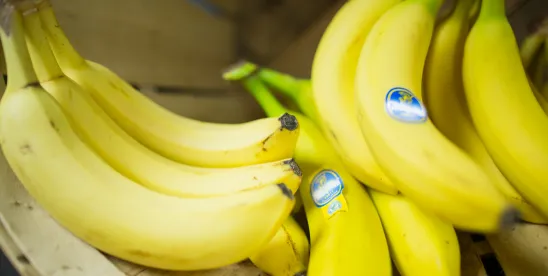The German Price Indication Regulation Under the Scrutiny of The European Court of Justice
A Gift of Its Own Kind
The German Price Indication Ordinance (PAngV) is celebrating its first anniversary and may receive a rather unusual birthday gift: a visit to the European Court of Justice (ECJ). Why all this? Because of fair trade bananas.
In a prospectus, a well-known German discounter chain advertised bananas with a reduced price of 1.29 € under the heading “Price highlight.” This was accompanied by a crossed-out price of 1.69 euros and a reference to the price difference of -23%. The lowest price of the last 30 days of 1.29 € was listed underneath. The Consumer Center Baden-Württemberg (Consumer Center) considered this to be a violation of the German PAngV. According to Section 11 of the PAngV, promotional activities that advertise price reductions must always state the lowest price of the last 30 days. According to the Consumer Center, the reference to 1.69 € circumvents this obligation, and simply adding the lowest price of the last 30 days underneath the advertisement is not sufficient to fulfill the legal requirements. In addition, according to the Consumer Center the presentation of an advertisement as a “Price highlight” is inadmissible if the price in question is in fact higher-or, as was the case here, at least not lower than the lowest price of the last 30 days.
A Look Behind the Scenes
After the Consumer Center issued a warning letter to the discounter chain and the addressee refused to give a cease-and-desist declaration, the Consumer Center filed an action with the Düsseldorf Regional Court arguing that the discounter chain failed to display prices in the prospectus in accordance with Section 11 PAngV. As the German PAngV is based on the EU Price Indication Directive (Price Indication Directive) and the interpretation of the PAngV thus simultaneously involves the interpretation of European secondary law, the Düsseldorf Regional Court referred the question to the ECJ in its order for reference dated May 19, 2023 (file reference 38 O 182/22).
In doing so, the Düsseldorf Regional Court formulated the following two questions:
Are Article 6a(1) and (2) of the Price Indication Directive to be interpreted as meaning that a percentage mentioned in an announcement of a price reduction may relate exclusively to the previous price within the meaning of Article 6a(2) of the Price Indication Directive?
Are Article 6a(1) and (2) of the Price Indication Directive to be interpreted as meaning that advertising highlights intended to emphasize the low price of an offer (such as, for example, the designation of the price as a 'price highlight') must, if they are used in an announcement of a price reduction, refer to the previous within the meaning of Article 6a(2) of the Price Indication Directive?
The question therefore arises whether simply mentioning the lowest price of the last 30 days is sufficient or whether the percentage indication must also refer to this lowest price as a benchmark or - if not - it can refer to other prices as well.
In the opinion of the Consumer Center, only a clear reference to the lowest price is permissible and sufficient to meet the requirements of Section 11 PAngV. They refer to the guidelines of the European Commission, that express this: “Accordingly, the price reduction must be presented using the indicated ‘prior’ price as reference, i.e. any indicated percentage reduction must be based on the ‘prior’ price as established in accordance with Article 6a.” (OJ EU C 526/130 p. 135).
The discounter chain, on the other hand, relies on the wording of the Price Indication Directive and the German PAngV, neither of which stipulates that the reference price must imperatively be the lowest price within the last 30-day time span. On this basis, the discounter chain further argues that it should only be obliged to indicate the lowest price without referring to it when pointing out percentage price reductions. By stating the lowest price, the discounter chain considers that the consumer is sufficiently informed and can correctly classify the ad price in the overall pricing structure of the product in question.
In its order for reference, the Düsseldorf Regional Court tended to follow the discounter chain’s argumentation: The mere obligation under the Price Indication Directive is to indicate the lowest price of the last 30 days. The Price Indication Directive does not contain any statements on how this information is to be provided. Whether the overall design of the information is misleading is not a question to be assessed in accordance with the PAngV, but rather under fair trading law. Although it results from the Commission’s guidelines that the reference point must always be the lowest price, these guidelines are not legally binding for the ECJ.
Outlook: What Comes After the Birthday Party?
The Consumer Center can win the case only if the ECJ answers both questions in the affirmative. The Düsseldorf Regional Court sees the two questions as a variation of the same basic problem: Do Section 11 PAngV and Article 6a (1) and (2) of the Price Indi-cation Directive only impose an additional information obligation on retailers or do they directly interfere with the type and manner of advertising?
Overall, the decision of the ECJ will be nothing less than precedential and may have significant practical implications for advertising measures. Whichever way the ECJ decides, it will be worth following the case closely.



 />i
/>i

